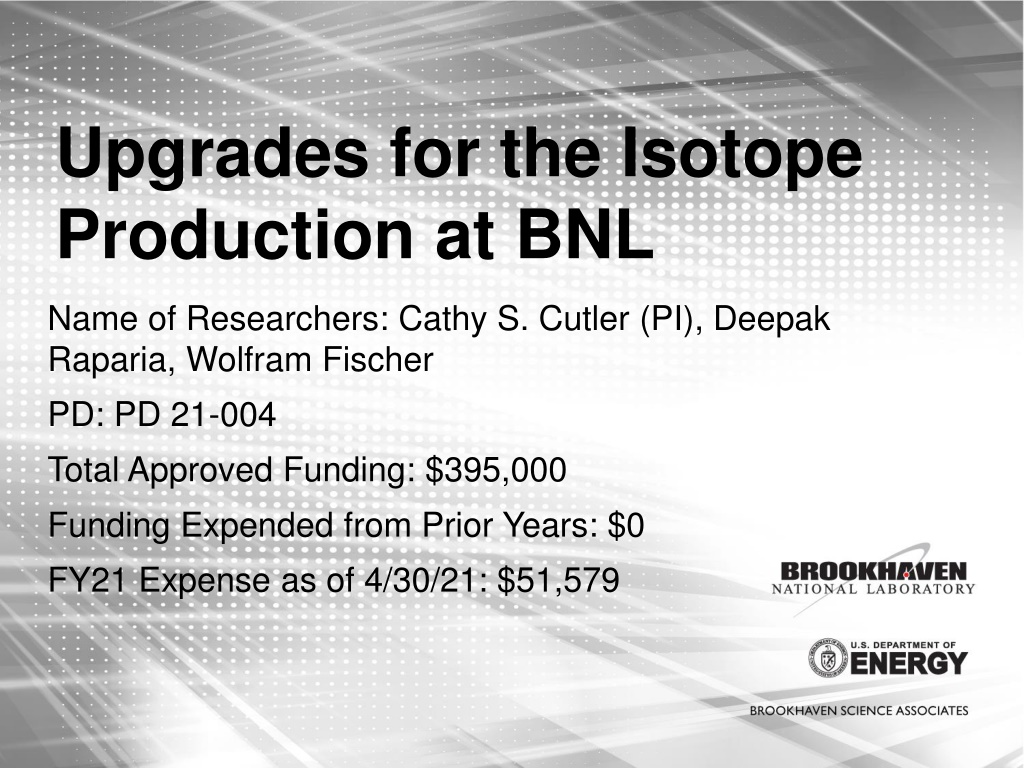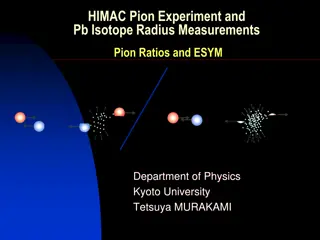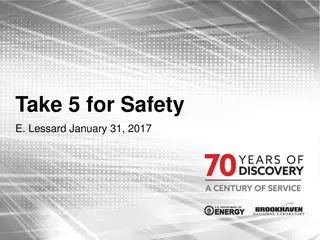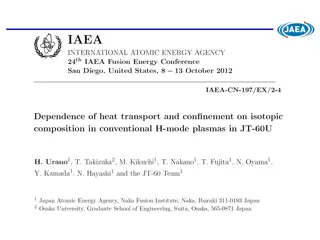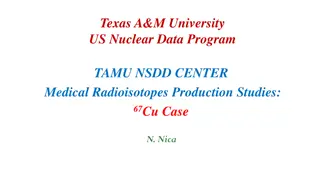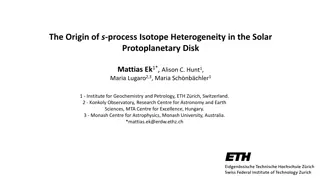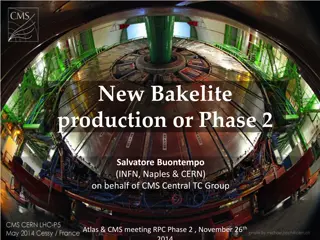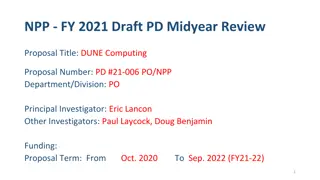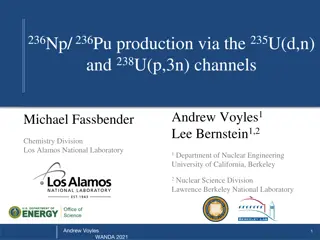Advancing Isotope Production at BNL
Researchers at Brookhaven National Laboratory are working on upgrades for isotope production to meet current and future needs, including developing new processing capabilities and particle beams. The project aims to address gaps in accelerator production and infrastructure to support US radioisotope needs, with plans for transformative facilities. Accomplishments so far include identifying the need for higher proton energies and intensities, evaluating options for new target stations, and presenting the project plan to gain support.
Download Presentation

Please find below an Image/Link to download the presentation.
The content on the website is provided AS IS for your information and personal use only. It may not be sold, licensed, or shared on other websites without obtaining consent from the author.If you encounter any issues during the download, it is possible that the publisher has removed the file from their server.
You are allowed to download the files provided on this website for personal or commercial use, subject to the condition that they are used lawfully. All files are the property of their respective owners.
The content on the website is provided AS IS for your information and personal use only. It may not be sold, licensed, or shared on other websites without obtaining consent from the author.
E N D
Presentation Transcript
Upgrades for the Isotope Production at BNL Name of Researchers: Cathy S. Cutler (PI), Deepak Raparia, Wolfram Fischer PD: PD 21-004 Total Approved Funding: $395,000 Funding Expended from Prior Years: $0 FY21 Expense as of 4/30/21: $51,579
Project Goals Evaluate the needs and identify gaps of the IP and nation for radionuclides Develop vision for BNL to make transformative changes to meet these needs Present plan to IP to reiterate and define proposal Identified need for additional processing capabilities and different particle beams at higher energies than what is currently available to meet emerging and future needs.
Approach Taken Evaluated the DOE IP execution plan and strategic plan to identify needs and gaps Nation has a capability gap in accelerator production and processing facilities infrastructure to support the US radioisotope needs of today and projected novel radioisotope needs of tomorrow BNL plans to develop transformative irradiation and production facilities to supply radioisotopes in sufficient quantity and purity for tended applications. We propose to advance accelerator technology to build beams of higher intensity and energy than currently available in a new facility with processing hot cells to expand Isotope Program capabilities, alleviate lack of radioisotope shortages, mitigate reliance on foreign supplies and meet future emerging radioisotope needs.
Accomplishments to Date Determined that higher proton energies and intensities are needed to provide sufficient Ac-225 further could increase generator production providing a cleaner more desirable form of Ac-225 Identified gap that could be filled by a multiparticle light ion linac that could provide high intensity Li, alpha, and deuteron beams Evaluated five different options for installation of new target stations, tunnels and accelerators Developing project plan Identifying R&D needs and rough schedule Project presented to IP to gain support and incorporate input 4
Research Output Identify need for new lithium source Identify need for R&D on target stations for such instruments Presentations: presented plan to IP management and at the DOE IP strategic planning meeting Manuscripts: Disclosures: Provided Nuclear Data In progress
Goals for the Remainder of the Project Complete the pre-conceptual design Develop mission need statement Establish the timeline Determine R&D efforts required to meet project goals Determine rough costs Work with project management to prepare proposal for the IP program
Return on Investment (ROI)- Future Potential Funding Sources: Return on Investment Upwards of over 100-300 million dollars to build new capability, and upwards of 10M in annual program increase. Increase in ability to produce pure radioisotopes could be in the range of 1-10 million per product per year to the lab. Build a capability unique in the world that when combined with existing hot cell infrastructure and capabilities would enable unique radioisotope production to the US and reduce its reliance on foreign suppliers. Describe Relationship to BNL and NPP s Strategic Objectives: Cultivating and exploring these isotope production capabilities will advance the performance of continued discovery within the Collider Accelerator department as well as address the needs for the Department of Energy Isotope program office. These new capabilities will facilitate the development of theragnostics to meet the NSAC-I recommendation in the 2015 report. 8
